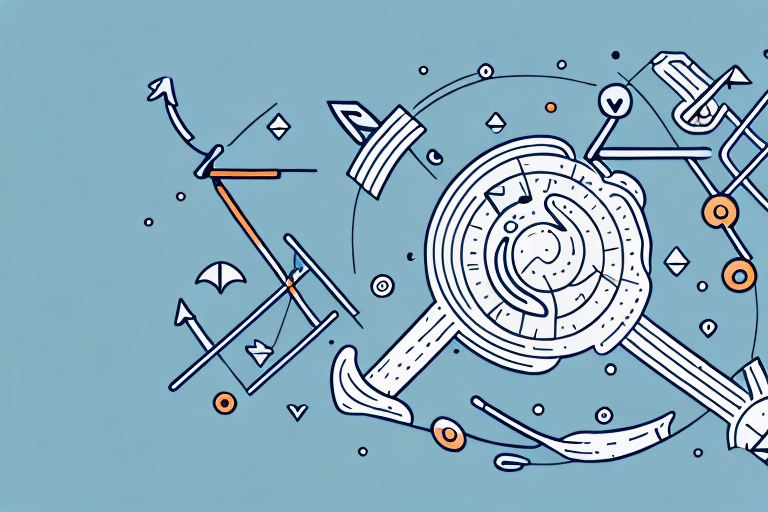10 Sure-Fire Tips for Customer Acquisition
In today's business landscape, customer acquisition is the lifeblood of any successful enterprise. To capture the attention of a highly discerning and tech-savvy target audience, businesses need to continuously refine and perfect their customer acquisition strategies. From crafting compelling value propositions to leveraging social media, email marketing, and referral marketing, there are countless tools and tactics at your disposal to help you succeed in acquiring and retaining customers. Here are 10 sure-fire tips you can use to boost your customer acquisition efforts.
Understanding Your Target Audience and Value Proposition
Understanding Your Target Audience: The First Step to Customer Acquisition
Your target audience is the key to unlocking your customer acquisition puzzle. Understanding their needs, preferences, wants, and pain points is the first step towards developing a winning customer acquisition strategy. Conduct thorough market research and surveys to get a clearer picture of your target audience. Gather data on their demographics, psychographics, and behavior patterns. Utilize tools like [Google Analytics](https://analytics.google.com/) and [SurveyMonkey](https://www.surveymonkey.com/) to gather actionable insights. Use this information to create detailed buyer personas that can guide your customer acquisition efforts.
According to HubSpot, businesses that utilize detailed buyer personas can achieve up to 73% more effective marketing strategies.
Once you have a clear understanding of your target audience, it's important to tailor your marketing messages and tactics to their specific needs and preferences. This can include:
- Creating personalized content
- Using targeted advertising
- Engaging with them on their preferred social media platforms
By focusing on your target audience and catering to their unique characteristics, you can increase the effectiveness of your customer acquisition efforts and ultimately drive more sales for your business.
Crafting a Compelling Value Proposition to Attract Customers
Your value proposition is the promise you make to your customers. It tells them what your product or service is, what problem it solves, and why it's better than your competitors' offerings. To attract customers, your value proposition needs to be clear, concise, and compelling. It should address your target audience's needs and pain points and be communicated consistently across all your marketing channels.
To craft a compelling value proposition:
- Conduct market research to understand your target audience's needs and preferences.
- Tailor your messaging to resonate with them and differentiate yourself from competitors.
- Incorporate social proof, such as customer testimonials or case studies, to build trust and credibility.
It's important to regularly review and update your value proposition as your business evolves and market conditions change. This ensures that your messaging remains relevant and resonates with your target audience. By continuously refining your value proposition, you can attract and retain customers, ultimately driving business growth.
Lead Generation Strategies
Creating an Effective Lead Magnet to Capture Prospective Customers' Information
A lead magnet is a free resource, such as an ebook, checklist, or webinar, that you offer in exchange for a prospective customer's contact information. It's a powerful tool for capturing leads and nurturing them into customers. To create an effective lead magnet, you need to:
- Identify your target audience's pain points and offer a solution.
- Create content that's informative, actionable, and valuable.
- Prominently feature your lead magnet on your website and other marketing channels.
Ensure that your lead magnet aligns with your overall marketing strategy and is relevant to the products or services you offer. It should also be consistent with your brand messaging and tone.
The design of your lead magnet is also crucial. It should be visually appealing and easy to read. Use high-quality images and graphics to make it more engaging, and include a clear call-to-action that encourages prospects to take the next step in the customer journey.
Harnessing the Potential of Referral Marketing for Customer Acquisition
Referral marketing is a powerful customer acquisition strategy that leverages word-of-mouth recommendations from satisfied customers. To harness its potential:
- Create a referral program that incentivizes your customers to refer their friends and family.
- Offer rewards, discounts, or other perks for successful referrals.
- Provide customers with pre-written messages or referral links to make the process easy.
- Track and measure the success of your referral program to optimize your strategy.
Referral marketing can help you reach new customers who may not have heard of your brand before, and customers acquired through referrals often have higher trust levels. Furthermore, it fosters strong relationships with your existing customers by rewarding their loyalty and support.
Developing and Optimizing Your Marketing Strategy
Developing an Engaging Marketing Strategy to Reach Your Target Audience
Your marketing strategy is the roadmap that guides your customer acquisition efforts. It needs to be integrated, consistent, and multi-channel. To develop an engaging strategy:
- Identify the marketing channels that resonate best with your target audience, such as social media, email, search engine optimization (SEO), and content marketing.
- Create engaging content that speaks directly to your target audience's needs and pain points.
- Measure the effectiveness of your marketing campaigns to refine and optimize your strategy continually.
Stay up-to-date with the latest trends and technologies, such as incorporating video content or utilizing chatbots and artificial intelligence to streamline customer service and enhance the overall customer experience. Additionally, conduct a competitive analysis to identify gaps in the market and opportunities to differentiate your brand.
Optimizing Your Website for Increased Customer Acquisition
Your website is the face of your business online and a primary tool for customer acquisition. To optimize your website:
- Ensure your website is fast, responsive, and user-friendly.
- Use clear and compelling calls-to-action (CTAs) throughout your website to drive conversions.
- Provide valuable content that answers your target audience's questions and addresses their pain points.
- Regularly measure and optimize your website's performance to enhance effectiveness.
Additionally, make sure your website is optimized for search engines. Conduct keyword research using tools like [Google Keyword Planner](https://ads.google.com/home/tools/keyword-planner/) to identify terms your target audience is searching for and incorporate them into your website's content and meta tags. This will help improve your website's ranking in search engine results pages (SERPs), making it easier for potential customers to find you.
Incorporate social proof by displaying customer testimonials, reviews, and case studies on your website. This demonstrates your credibility and builds trust with potential customers, especially in industries where trust is a key factor in the decision-making process, such as healthcare or finance.
Leveraging Digital Marketing Channels
Leveraging Social Media for Customer Acquisition: Best Practices
Social media is a powerful tool for customer acquisition, allowing you to connect with your target audience in a personal and engaging way. To leverage social media effectively:
- Identify the social media channels that your target audience frequents.
- Create content that is shareable, informative, and entertaining.
- Engage with your followers regularly by responding promptly to comments and feedback.
- Use social media analytics tools to measure the effectiveness of your campaigns.
Collaborate with influencers who align with your brand values to reach a wider audience. Influencers can help promote your products or services through their large followings, enhancing your brand's visibility and credibility.
Stay updated with the latest social media trends and platform updates by following industry blogs, attending webinars, and participating in social media discussions. This helps you adapt your social media strategy to leverage new features and stay ahead of the competition.
The Power of Email Marketing in Customer Acquisition: Tips and Tricks
Email marketing is a highly effective customer acquisition tactic that allows you to communicate directly with prospects and customers, nurture leads, and build relationships. To maximize the effectiveness of your email marketing:
- Segment your email list based on demographics, interests, and behavior to deliver personalized content.
- Use compelling subject lines and personalized messaging to increase open rates and click-through rates.
- Provide value in every email, such as offering insights, discounts, or exclusive content.
- Include clear and persuasive calls-to-action (CTAs) to drive conversions.
According to Statista, email marketing delivers an average ROI of $42 for every $1 spent, making it one of the most cost-effective customer acquisition channels.
Regularly analyze and optimize your email campaigns by:
- Conducting A/B testing on subject lines, messaging, and CTAs to determine what resonates best with your audience.
- Monitoring email metrics like open rates, click-through rates, and conversion rates using tools like [Mailchimp](https://mailchimp.com/) or [HubSpot](https://www.hubspot.com/).
- Ensuring your emails are mobile-friendly, as a significant portion of users access emails on their smartphones.
By continually refining your email marketing strategy, you can enhance its effectiveness in acquiring and retaining customers.
Partnering with Influencers and Industry Experts to Expand Your Reach
Partnering with influencers and industry experts is an effective way to expand your reach and enhance your brand's credibility. To successfully collaborate:
- Identify influencers and experts who have a strong following within your target audience.
- Reach out to them with a clear proposal outlining the benefits of partnership.
- Collaborate on content creation or campaigns that showcase your products or services.
- Provide influencers with valuable content they can share with their followers.
- Measure and optimize the success of your partnerships to ensure maximum ROI.
Influencers can help amplify your marketing messages and introduce your brand to a broader audience, driving customer acquisition through authentic and trusted recommendations.
Measuring and Analyzing Customer Acquisition
Measuring Success in Customer Acquisition: Key Metrics to Track and Analyze
To gauge the success of your customer acquisition efforts, it's essential to track and analyze key metrics. These metrics include:
- Customer Acquisition Cost (CAC): The total cost of acquiring a new customer, including marketing and sales expenses.
- Customer Lifetime Value (CLV): The total revenue a business can expect from a single customer account throughout its relationship.
- Conversion Rates: The percentage of leads that convert into paying customers.
- Click-Through Rates (CTR): The percentage of people who click on a link within your marketing materials.
- Bounce Rates: The percentage of visitors who navigate away from your website after viewing only one page.
Utilize analytics tools like [Google Analytics](https://analytics.google.com/) or [HubSpot](https://www.hubspot.com/) to monitor these metrics regularly. Data-driven insights allow you to make informed decisions to optimize your customer acquisition strategy effectively.
Overcoming Common Challenges in Customer Acquisition and Retention
Customer acquisition and retention come with their set of challenges. Common obstacles include:
- Budget Constraints: Limited marketing budgets can restrict the reach and effectiveness of your campaigns.
- Lack of Resources: Insufficient personnel or expertise can hinder the execution of customer acquisition strategies.
- Intense Competition: High competition can make it difficult to stand out and attract customers.
- Shifting Consumer Behavior: Changes in consumer preferences and behaviors require businesses to adapt quickly.
To overcome these challenges:
- Stay Agile: Be prepared to adapt your strategies in response to changing market conditions and consumer behaviors.
- Optimize Budget Allocation: Focus your resources on the most effective channels and tactics that yield the highest ROI.
- Invest in Training: Equip your team with the necessary skills and knowledge to execute effective customer acquisition strategies.
- Differentiation: Identify and leverage unique selling points that set your brand apart from competitors.
Staying Ahead with Innovative Strategies
Staying Ahead of the Competition: Innovative Strategies for Customer Acquisition
To stay ahead of the competition, it's crucial to continuously innovate and experiment with new customer acquisition strategies. Some innovative tactics include:
- Gamification: Incorporate game-like elements into your marketing efforts to increase engagement and encourage customer participation.
- User-Generated Content (UGC): Encourage customers to create and share content related to your brand, which can enhance credibility and reach.
- Augmented Reality (AR): Use AR to provide interactive and immersive experiences that differentiate your brand.
- Personalization: Utilize data and AI to deliver highly personalized marketing messages and offers.
Keep a finger on the pulse of your industry by attending conferences, following industry leaders, and staying informed about emerging technologies and trends. Being willing to take calculated risks and try new approaches can lead to unique opportunities for customer acquisition and sustained business growth.
In conclusion, customer acquisition is a critical component of any successful business. By following these 10 sure-fire tips, businesses can develop winning customer acquisition strategies that drive growth and profitability.




















